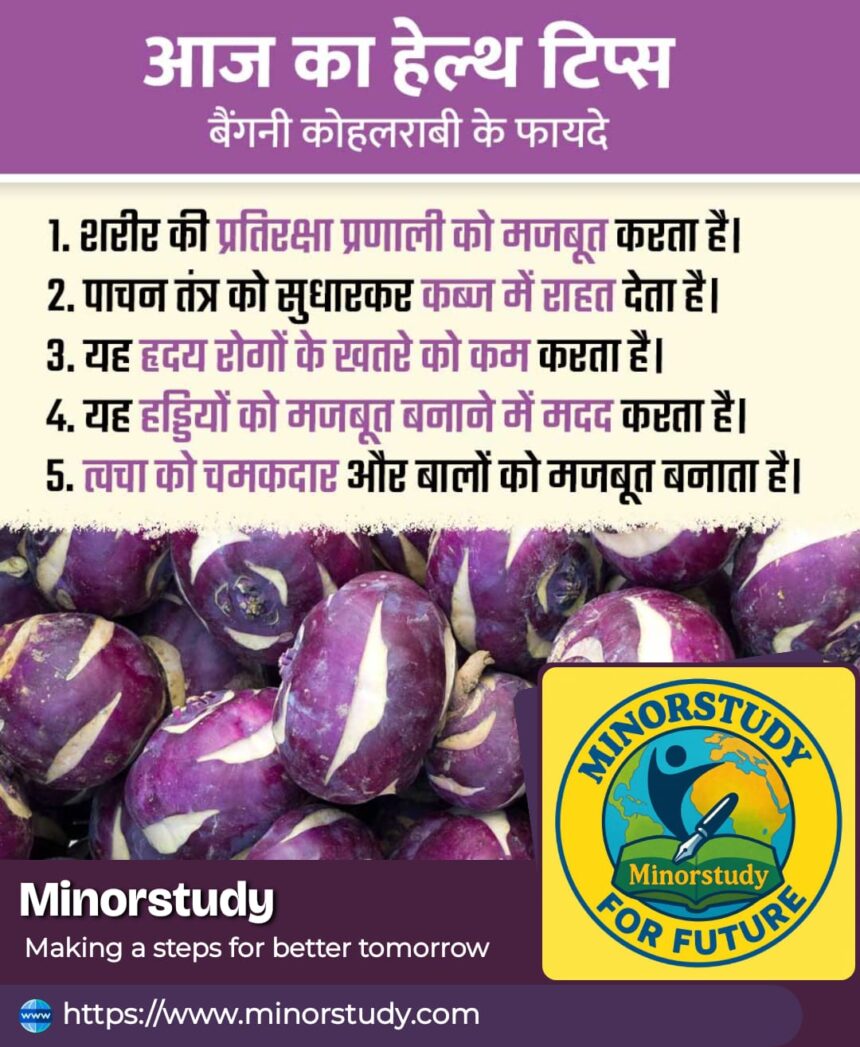🥦 5 Surprising Health Benefits of Purple Kohlrabi That You Shouldn’t Ignore!
Purple Kohlrabi — the vibrant, alien-looking vegetable — is more than just a feast for the eyes. It’s a nutritional powerhouse with a long history and a wide range of health benefits, from boosting immunity to making your skin glow.
- 🕰️ History of Purple Kohlrabi
- 🌱 Nutritional Profile of Purple Kohlrabi
- ✅ Top 5 Health Benefits of Purple Kohlrabi
- 1. 🛡️ Strengthens the Body’s Immune System
- 2. 🚽 Relieves Constipation and Boosts Digestion
- 3. ❤️ Reduces Risk of Heart Diseases
- 4. 🦴 Strengthens Bones
- 5. ✨ Promotes Glowing Skin and Strong Hair
- 📅 Timeline and Cultural Importance
- 💡 Interesting Facts about Purple Kohlrabi
- 🤔 Frequently Asked Questions (FAQs)
- Q1. Is purple kohlrabi healthier than green kohlrabi?
- Q2. Can I eat purple kohlrabi raw?
- Q3. How often should I include it in my diet?
- Q4. Is it good for diabetics?
- Q5. Can children eat purple kohlrabi?
- 🎉 Observance and Modern-Day Use
- ✨ Wishing You Good Health with Purple Kohlrabi
- 📌 Important Points in Summary
- 🌍 Importance in Our Life and Society
- 🧠 Conclusion: More Than Just a Pretty Vegetable
In this article, we dive into everything about Purple Kohlrabi, including its origin, timeline, scientific significance, daily life impacts, FAQs, and how it fits into a healthy lifestyle.
🕰️ History of Purple Kohlrabi
Purple Kohlrabi (botanical name: Brassica oleracea var. gongylodes) is part of the cabbage family and has been cultivated since Roman times. The name “Kohlrabi” comes from the German words “kohl” (cabbage) and “rabi” (turnip), referring to its cabbage-turnip hybrid nature.
Although it’s widely associated with European cuisine, particularly in Germany, Hungary, and Austria, kohlrabi made its way into Indian and Asian kitchens where it became a staple in Himalayan regions like Kashmir and Sikkim.
🌱 Nutritional Profile of Purple Kohlrabi
Purple Kohlrabi is low in calories but rich in nutrients, making it ideal for weight-conscious and health-focused individuals.
| Nutrient | Amount (per 100g) |
|---|---|
| Calories | 27 kcal |
| Fiber | 3.6 g |
| Vitamin C | 62 mg (102% DV) |
| Potassium | 350 mg |
| Calcium | 24 mg |
| Antioxidants | High (anthocyanins) |
Its purple hue is due to anthocyanins, powerful antioxidants known for their anti-inflammatory and anti-aging effects.
✅ Top 5 Health Benefits of Purple Kohlrabi
1. 🛡️ Strengthens the Body’s Immune System
Thanks to its high vitamin C content, purple kohlrabi stimulates white blood cell production, helping your body fight off infections, flu, and oxidative stress. One serving can cover your entire daily vitamin C requirement.
2. 🚽 Relieves Constipation and Boosts Digestion
The dietary fiber in kohlrabi improves bowel regularity and promotes a healthy gut biome, making it ideal for those struggling with constipation or irregular digestion.
3. ❤️ Reduces Risk of Heart Diseases
With zero cholesterol and high antioxidant levels, purple kohlrabi helps in regulating blood pressure, lowering LDL cholesterol, and improving heart function — making it cardio-friendly.
4. 🦴 Strengthens Bones
Purple kohlrabi contains essential minerals like calcium, magnesium, and phosphorus, all crucial for bone density and preventing osteoporosis, especially in aging adults and women.
5. ✨ Promotes Glowing Skin and Strong Hair
The antioxidants and vitamin C aid in collagen production, which supports radiant skin and healthy hair growth. The anthocyanins also help combat skin aging and pigmentation.
📅 Timeline and Cultural Importance
| Year/Period | Event |
|---|---|
| Roman Era | Cultivation of wild cabbage begins |
| 16th Century | Kohlrabi becomes a staple in European farms |
| 19th Century | Introduced to India by British horticulturists |
| 20th Century | Used in traditional Kashmiri cuisine |
| Present Day | Popular in organic and health-focused diets globally |
💡 Interesting Facts about Purple Kohlrabi
The entire plant is edible — bulb, leaves, and stem.
It’s known as “Knol-khol” in India.
Kohlrabi belongs to the same family as broccoli, kale, and cauliflower.
Purple variety contains more antioxidants than green kohlrabi.
Used in traditional medicine to treat inflammation and respiratory conditions.
🤔 Frequently Asked Questions (FAQs)
Q1. Is purple kohlrabi healthier than green kohlrabi?
Yes. Purple kohlrabi contains anthocyanins, which have more antioxidant properties compared to the green variety.
Q2. Can I eat purple kohlrabi raw?
Absolutely! It’s crunchy and slightly sweet, perfect for salads, slaws, or as a snack.
Q3. How often should I include it in my diet?
Eating it 2–3 times per week is beneficial, especially in combination with other cruciferous vegetables.
Q4. Is it good for diabetics?
Yes. It has a low glycemic index, helping to regulate blood sugar levels effectively.
Q5. Can children eat purple kohlrabi?
Yes. It’s gentle on the stomach and a great source of nutrients for growing children.
🎉 Observance and Modern-Day Use
Though not associated with a specific global health observance, Purple Kohlrabi is celebrated informally in farmers’ markets, organic food movements, and seasonal cooking trends.
Recipes You Can Try:
Purple Kohlrabi Slaw
Kashmiri Monje Haakh
Stir-fried Kohlrabi with Garlic and Sesame
Creamy Purple Kohlrabi Soup
✨ Wishing You Good Health with Purple Kohlrabi
Incorporating nature’s gifts into our daily meals is a step toward sustainable, holistic health. Wishing you vibrant health, stronger immunity, and glowing skin with every bite of Purple Kohlrabi.
📌 Important Points in Summary
Purple kohlrabi is rich in vitamin C, fiber, and antioxidants.
It strengthens immunity, digestion, bones, heart health, and skin.
Easy to prepare and can be eaten raw or cooked.
Ideal for all age groups, including children and elderly.
A smart addition to weight-loss, diabetic, and vegan diets.
🌍 Importance in Our Life and Society
In a world dominated by processed foods, returning to natural, colorful, and seasonal vegetables like Purple Kohlrabi is not just a dietary choice — it’s a social and environmental act.
It supports:
Local agriculture
Nutritional literacy
Sustainable food habits
Preventive healthcare
Eating more vegetables like Purple Kohlrabi helps reduce the burden on healthcare systems by preventing non-communicable diseases.
🧠 Conclusion: More Than Just a Pretty Vegetable
Purple Kohlrabi proves that good health doesn’t need to come from a pill. It’s available at your local market, it’s affordable, and it’s packed with essential nutrients that improve your daily life.
It’s time to make this purple power veggie a regular on your plate. Eat smart. Eat colorful. Eat Purple Kohlrabi!








